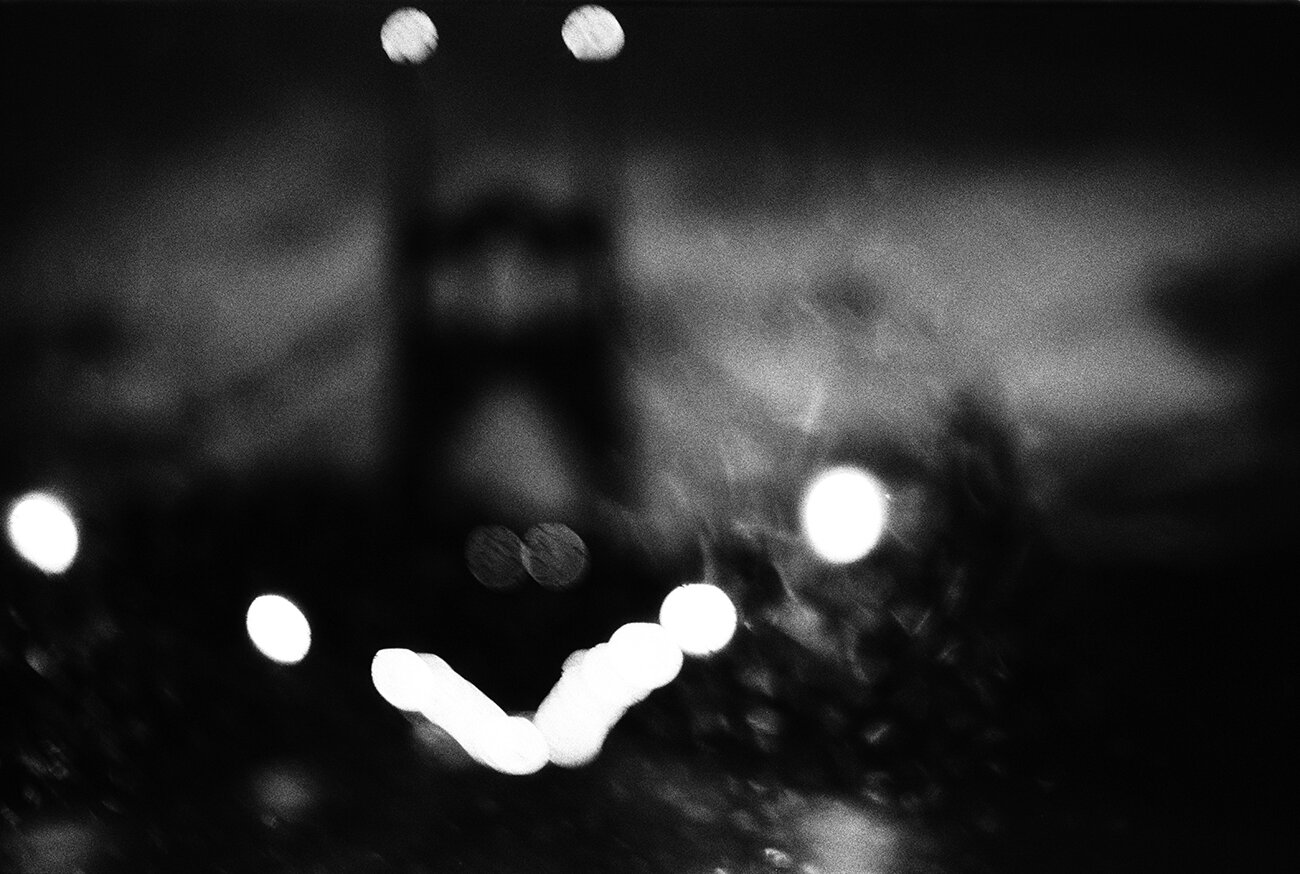Film Friday - March 14th, 2025. Fomapan 400 Action Film Review
This Film Friday entry marks our first look into the line of films produced by Foma Bohemia of the Czech Republic. Foma doesn’t carry the same name recognition as Kodak, Ilford, Fuji or even the Rollei films, so it often gets overlooked and is relatively unknown to many photographers. However, Foma has been involved in the production of film, paper and chemistry since 1921 - over a century now.
Fomapan 400 is the fastest emulsion in Foma Bohemia’s line of films. It’s siblings include Fomapan 100 and Fomapan 200, plus a Retropan 320 film that was introduced just a few years ago. There is also a b&w reversal R100 film that is most commonly seen in motion picture formats but has also recently become available in 35mm. Generally speaking, all these films have their own distinct traits. Unlike many other families of films that often look very consistent across different speeds (think Kodak TMax or Portra), each member of the Fomapan family of films should be seen as a standalone character. Therefore it makes it worthwhile to experiment with all of them.
Of all the Foma films, Fomapan 400 is our favorite, and the one we have the most experience with here at Blue Moon Camera. Initially we were drawn to this film because it was A) Something different and new and B) It was cheap. But as we saw more and more of our rolls of Fomapan 400 developed we quickly began to appreciate this film for many more reasons than those relatively superficial ones given above. That makes writing a Film Friday like this kind of exciting, because we really dig Fomapan 400 and remember a time before it had ever entered our radars, and so here we are with an opportunity to give you the same kind of introduction.
Fomapan 400 has a very distinct look to it that defies easy generalization. It has wonderful grit, a soft look and glowing highlights. Image made with a Nikon FM2n.
As usual, perhaps the best place to start with Fomapan 400 is its grain. The grain of this film is likely going to be the first thing you notice. First off, it’s a pretty grainy film. The datasheet for Fomapan 400 rates it at an RMS Granularity of 17.5, which puts it slightly higher than the 17 of Kodak Tri-X, as a comparison. So there is a lot of grit and texture to Fomapan 400. But there is more to it than that. This film has a very old school pattern to its grain. We have no idea when the last time this emulsion was updated, but it has a feel to its grain that stretches back decades. We have seen some users of Fomapan 400 comment that the film looks like how Tri-X used to look. So while the grain is definitely apparent, especially when using it in 35mm, it is also very organic and pleasing. There is something so familiar about the pattern to this film’s grain that lends its images a certain quality.
So you like film grain, eh? Try some Fomapan 400. Image made with a Nikon FM2n.
While the grain of Fomapan 400 is readily visible it is not what we would consider the film’s defining quality: that would have to be how it renders tonality along with its glowing highlights. Fomapan 400 has a pretty unique spectral sensitivity. It has relatively low blue sensitivity and the film progressively gains more and more sensitivity moving up to the red end of the spectrum. Most films have spectral sensitivity charts that run in peaks and valleys, but Fomapan has one steady, uphill climb to its chart, reaching a peak at about 660nm before rapidly falling off to terminate at about 700nm. This means a couple interesting things. First off, Fomapan 400 has much more sensitivity to the red end of the spectrum than it does to the blue/green end. You will see this right away with portraiture where the film lightens skin tones noticeably. In this sense, it is kind of like it has a built-in red filter. Furthermore, the fact that the tail end of its sensitivity reaches all the way to 700nm means it is getting into near-infrared territory. In fact we have seen photographers use this film with an R72 filter (and an eight stop exposure compensation) and produce true infrared images. There are better films out there to shoot infrared, but in a pinch, you can do some fun things in the near-IR with Fomapan 400 and some extra long shutter speeds. Circling back around to that sensitivity though, the way that Fomapan 400 can make skin tone glow is one of our favorite aspects to this film. It gives it a unique look that really sets it apart from other b&w films. Here take a look.
An unfiltered portrait of our friend Alec, who has been a customer of the shop for more years than we can count. Even without the use of any filter, his skin tone has lightened significantly, as if a red filter had been used.
Another unfiltered portrait made with Fomapan 400 that looks as if it was shot through a red filter. This frame was likely overexposed by a stop or two which has contributed to the soft, glowy look of this image.
Combined with how this film renders tonality is a contrast that feels a bit soft. To be honest, we are not entirely sure if it is the contrast that gives Fomapan 400 a “softer” feel, but something about this film definitely does. Even if it is not exactly the contrast doing it, Fomapan 400 has a slightly lower than average contrast to it. This can vary quickly though depending on how the film is exposed. If you overexpose your Fomapan by 1-2 stops, it rapidly gains an even softer feel to its images.
And perhaps this is related to its tendency toward halation. Halation is when light passes or refracts through the film itself, bouncing around and causing glowing highlights or halos around the brightest areas of the film. Fomapan’s highlights to tend to wash out because of this and this glow can creep into the midtones helping bolster the softer feeling given by the film’s lower contrast. Interestingly enough, we see this halation more often in the 120 format of Fomapan 400 than we do in 35mm, likely because the two have different bases. Fomapan 35mm is coated onto a triacetate base while 120 has a polyester base. The latter is more prone to “light piping” than the former and while the 120 film has an anti-halation layer it does not seem to be effective enough. Then again, as with the film’s spectral sensitivity, this halation helps contribute to a unique look that allows Fomapan 400 to stand apart from other b&w films.
This glow is generally referred to as halation and is a common characteristic of this film in its 120 format.
Another image showing the halation effect of Fomapan 400. Both images made with a Hasselblad 500C.
Put it all together: Fomapan 400’s spectral sensitivity, it’s softer contrast and the glow it gets to its highlights due to halation and it is a film that can make some wonderfully characteristic images that have a look and feel all their own. Image made with a Pentax 67.
When it comes to Fomapan 400, that is the main course, but we do have a couple other tidbits to share with you about this film that may help inform how and when you use it. The film has comparatively low latitude. It is still pretty versatile, especially in regard to overexposure but not quite as much as other black and white films. It does seem to underexpose rather easily, especially depending on which developer you use. For example, Fomapan 400 definitely benefits from an extra stop of exposure if you plan on developing it in Rodinal. That extra exposure quickly exacerbates the film’s tendency toward halation. So if you are wanting to promote that look, overexpose. Pushing Fomapan up to ISO 800 can also produce some nice results, sharpening the film’s softer look to a keener edge. And likewise, we have seen some nice work done exposing this film at ISO 200-125 and then pulling it a stop in development. This produces images of finer grain than usual and even softer contrast.
We would caution you to take care when using this film for long exposure work. It has a pretty quick reciprocity failure rate to it. The data sheets recommend normal exposures up to 1/2 second. Between 1/2 second and 10 seconds it is recommended to give the film and extra 1.5-3 stops of exposure and by the time you are up to 1 minute exposures count on adding 4 stops of exposure.
The other interesting wrinkle to Fomapan 400 is that it has shown up in the film markets under a few different aliases. As far as our research can confirm, Fomapan 400 is the same film as Arista EDU Ultra 400 and quite likely the same film as Lomography’s Lady Grey. Or at least, these other two films are also produced by the Foma Bohemia plant and share the same developing times. So if you ever find yourself with a hankering for this film but cannot find it under its Fomapan name, grab some Arista EDU Ultra instead. That latter film often is just a little bit cheaper as well!
And that about wraps up all the experience and collected wisdom we have to impart regarding this Czech film. It may not take over the top spot on your list of most-used b&w films but it makes a solid contender for the second or third spot. It is a film we are constantly cycling into our camera bags and finding ourselves enjoying when we want a bit of a different flavor to our film work.
We have almost every film stock available on the market. Check it out!
If you need an excellent lab for meticulous film developing, topnotch optical prints, traditional darkroom printing and superb film scanning, we’re your lab!
Also, sign up for our weekly newsletter The Loupe and keep your eyes peeled on our social media feeds every Friday when we feature a different film and also offer it at a one day discount of 15% off!




















